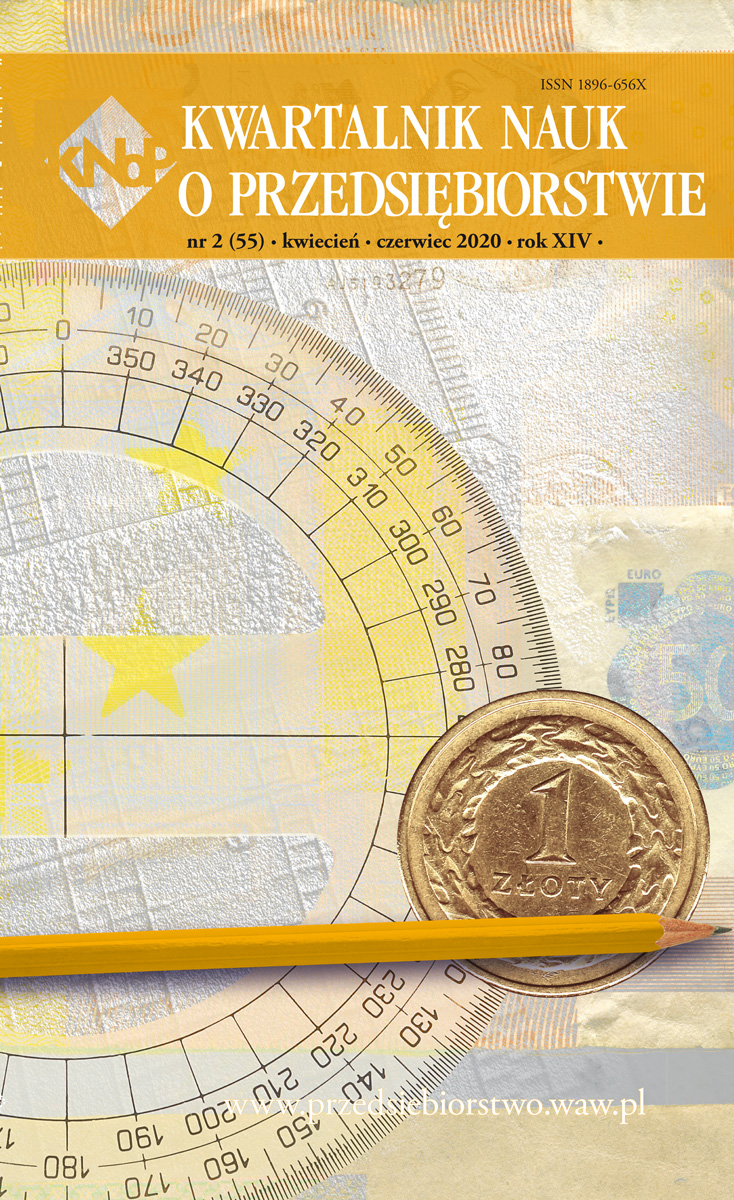e-Receipt Platform. Current status and implementation prospects
Main Article Content
Abstract
As a consequence of the change in the concept of the sales reporting method using cash registers, the Ministry of Finance and, subsequently, the Ministry of Development began legislative work aimed at introducing an obligation for entrepreneurs to report on-line sales using cash registers. Following the changes, the financial administration will receive real time data on the sales. Entrepreneurs, divided into business groups, will have sufficient time to get to know the guidelines and to implement them. The expected date of the implementation of the new rules is 2022. It is also planned to make the functionality of the e-Receipt system available to consumers. The authors of the article present the functional project of the e-Receipt system, which uses a Purchase ID. To develop the system design, the latest versions of specialist software were used, such as Enterprise Architect and Axure RP and the processes in BPMN 2.0 notation and UML diagrams.
Downloads
Article Details
The author of the article declares that the submitted article does not infringe the copyrights of third parties. The author agrees to subject the article to the review procedure and to make editorial changes. The author transfers, free of charge, to SGH Publishing House the author's economic rights to the work in the fields of exploitation listed in the Article 50 of the Act of 4 February 1994 on Copyright and Related Rights – provided that the work has been accepted for publication and published.
SGH Publishing House holds economic copyrights to all content of the journal. Placing the text of the article in a repository, on the author's home page or on any other page is allowed as long as it does not involve obtaining economic benefits, and the text will be provided with source information (including the title, year, number and internet address of the journal).
References
2. Erikson H-E. (2000), Penker M., Business Modeling with UML: Business Patterns at Work, John Wiley & Sons 2000.
3. Graessle P., Baumann H., Baumann P. (2007), UML 2.0 w akcji. Przewodnik oparty na projektach, Helion 2007.
4. Grupa Kapitałowa COMP (2016), Perspektywy i koncepcja rozwoju, www.comp.com.pl dostęp 03.2018.
5. Kruba P., (2018), Projekt funkcjonalny platformy dystrybucji e-paragonów konsumentom, Praca Magisterska, Akademia Finansów i Biznesu Vistula, Wydział Inżynierski, Warszawa.
6. Projekt ustawy (2017a) z dnia 18 września 2017 r. o zmianie ustawy o podatku od towarów i usług oraz ustawy – Prawo o miarach.
7. Projekt ustawy (2017b) z dnia 11 grudnia 2017 r. o zmianie ustawy o podatku od towarów i usług oraz ustawy – Prawo o miarach.
8. Projekt rozporządzenia Ministra Rozwoju i Finansów z dnia 27 stycznia 2017 r. w sprawie kryteriów i warunków technicznych, którym muszą odpowiadać kasy rejestrujące.
9. Rozporządzenie Ministra Finansów z dnia 14 marca 2013 r. w sprawie kas rejestrujących.
10. Rozporządzenie Ministra Gospodarki, (2013) z dnia 27 sierpnia 2013 r. w sprawie kryteriów i warunków technicznych, którym muszą odpowiadać kasy rejestrujące.
11. The Object Management Group (2011), BPMN 2.0 specification, https://www.omg.org/spec/BPMN/2.0/PDF dostęp 10.2017.
12. The Object Management Group (2017), UML 2.5.1 specification, https://www.omg.org/spec/UML/2.5.1/PDF dostęp 10.2017.
13. Marcinkowski B. (2013), Modelowanie procesów biznesowych z wykorzystaniem języka UML, „Contemporary Economy Electronic Scientific Journal”, Vol. 4, Issue 1 (2013) s. 1-10.
14. Bednarek M. (2017), Kasy fiskalne online od przyszłego roku obowiązkowe dla wybranych firm, http://wyborcza.biz/biznes/7,147584,22173725,paragon-prosto-do-systemu-nowe-kasy-fiskalne-odprzyszlego.html, dostęp 04.2018.
15. Popławski A. (2016), Firmy obawiają się e-paragonów, https://www.crn.pl/aktualnosci/firmyobawiaja-sie-e-paragonow dostęp 04.2018.
16. MF (2017), Strumień e-Faktura i e-Paragon, https://www.gov.pl/cyfryzacja/strumien-e-faktura-i-eparagon dostęp 04.2018.
17. Money.pl (2018), Ministerstwo Przedsiębiorczości i Technologii chce wykorzystać infrastrukturę bankową do wdrożenia systemu elektronicznych paragonów. Dowód zakupu trafiałby na skrzynkę odbiorczą, https://www.money.pl/gospodarka/wiadomosci/artykul/e-paragon-platnosc-kartaterminal, 148,0,2399124.html, dostęp 03.2018.
18. http://www.sparxsystems.com/resources/user-guides/14.0/guidebooks/business-modelingtechniques.pdf, dostęp 02.2018.
19. http://sparxsystems.com/products/ea, dostęp 11.2017.
20. https://www.axure.com, dostęp 12.2017.
21. Sparx Systems & Stephen Maguire (2016), Requirements Engineering http://www.sparxsystems.com.au/downloads/whitepapers/requirements-engineering.pdf, dostęp 03.2018.
22. Sparx Systems Whitepaper (2004a), The Use Case Model, http://www.sparxsystems.com.au/downloads/whitepapers/The_Use_Case_Model.pdf, dostęp, 02.2018.
23. Sparx Systems whitepapers (2004b), The Logical (Class) Model , http://www.sparxsystems.com.au/downloads/whitepapers/The_Logical_Model.pdf, dostęp 02.2018.
24. Sparx Systems whitepapers (2004c), The Component Model http://www.sparxsystems.com.au/downloads/whitepapers/The_Component_Model.pdf, dostęp 02.2018.
25. Sparx Systems Whitepaper (2007), The Bussines Process Model http://www.sparxsystems.com.au/downloads/whitepapers/businessProcessModelTutorial.pdf, dostęp 03.2018.
26. Sparx Systems Whitepaper (2016), Requirements Management with Enterprise Architect http://www.sparxsystems.com.au/downloads/whitepapers/requirements-management-withenterprise- architect-060616.pdf, dostęp 02.2018.
27. Sparx Systems Whitepaper (2018), Business Modeling Techniques http://www.sparxsystems.com/ resources/user-guides/14.0/modeling/building-models.pdf, dostęp 02.2018.
28. Suchenia A., Ligęza A. (2017), Anomalie w modelowaniu procesów biznesowych, IAPGOŚ 2/2017
29. Milewska E. (2010), Modelowanie procesów biznesowych i analiza systemowa, Zeszyty Naukowe Akademia Morska w Szczecinie, 24/96 2010.
30. Nieckuła J. (2015), Metodyka stosowania notacji BPMN w modelowaniu procesów administracji publicznej, Zeszyty Naukowe Wydziału Informatycznych Technik Zarządzania Wyższej Szkoły Informatyki Stosowanej i Zarządzania „Współczesne Problemy Zarządzania”, Nr 1/2015.
31. Pasamonik P. (2010), Modelowanie procesów biznesowych zorientowane na czynności, Zeszyty Naukowe WSInf, Vol. 9, 2.

